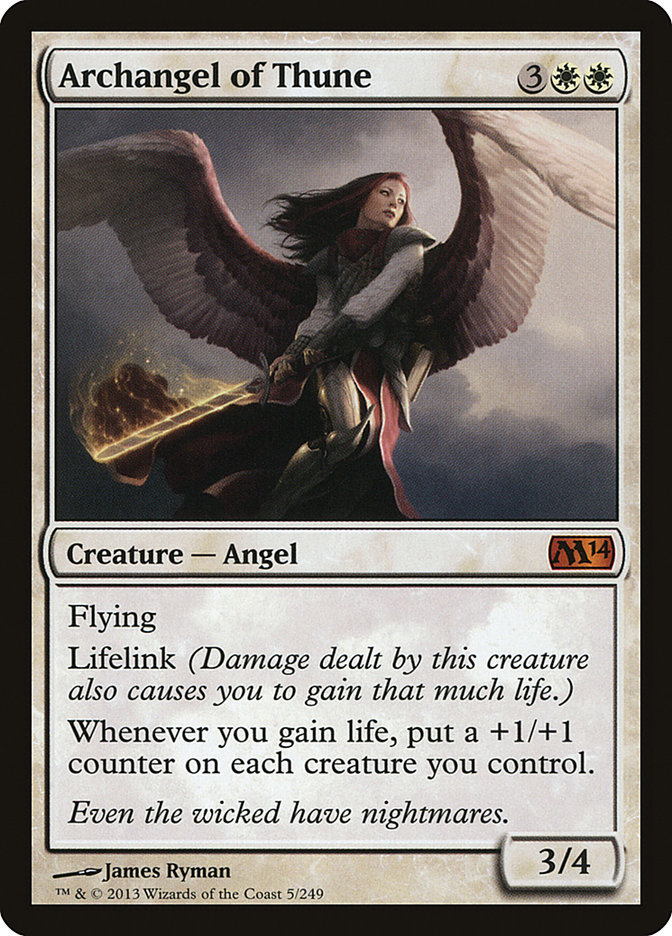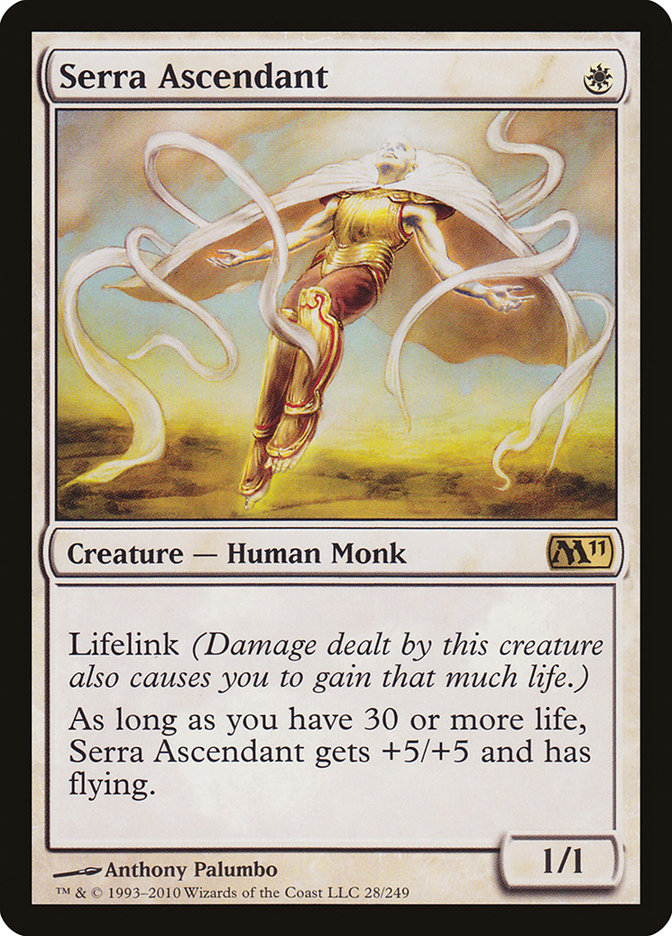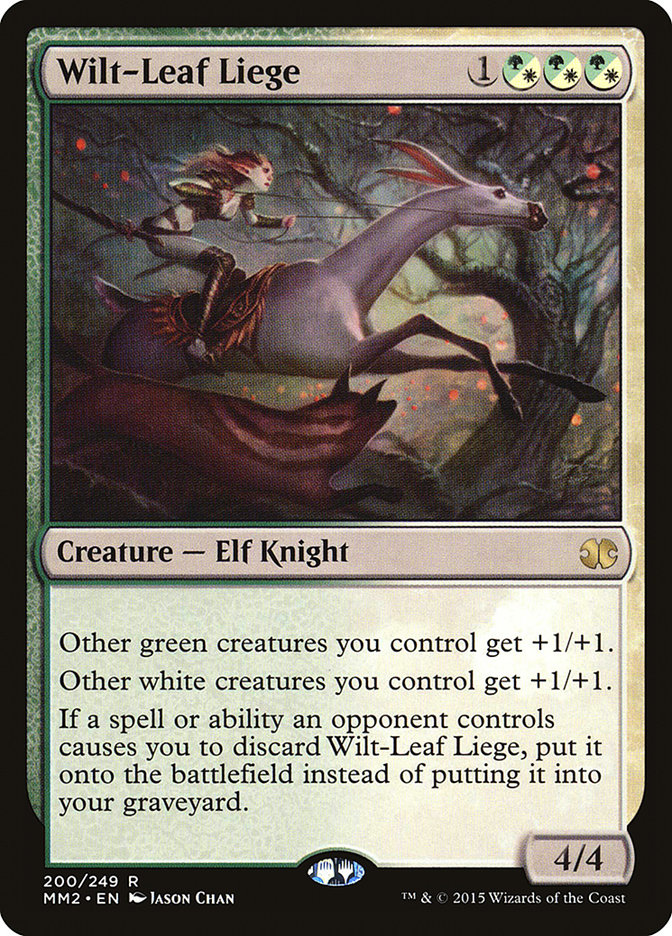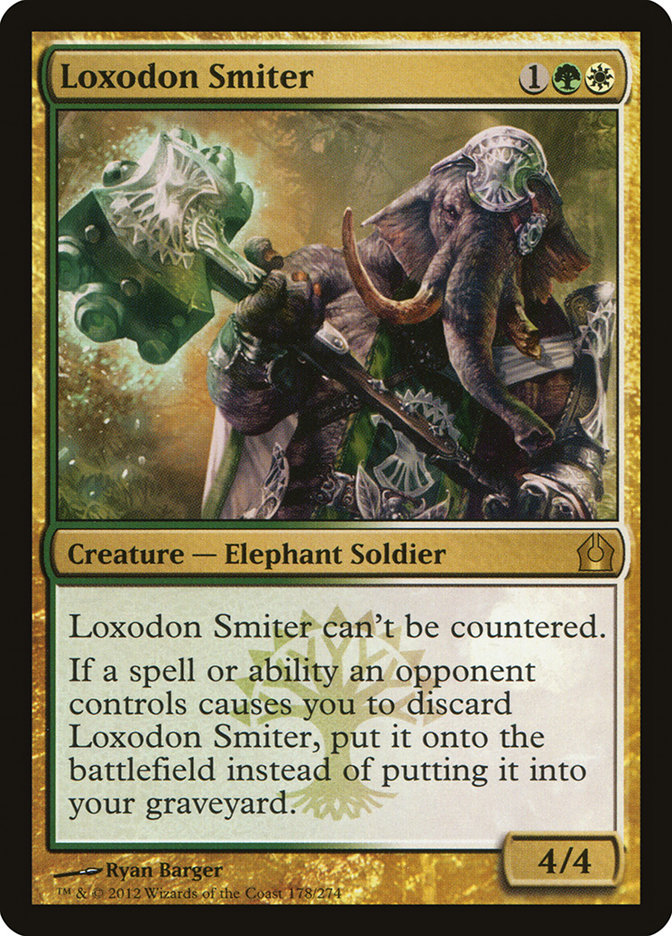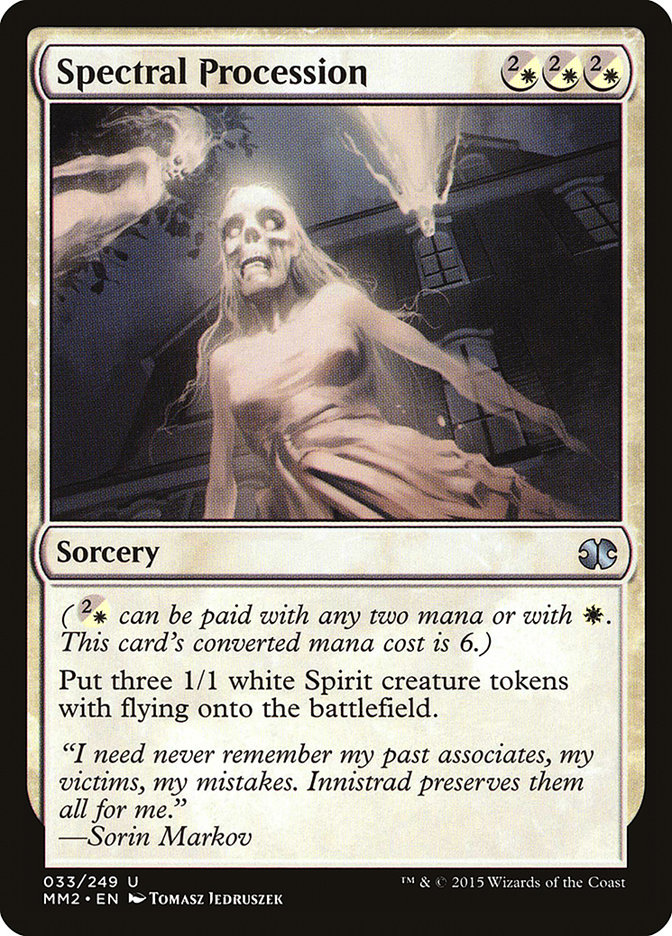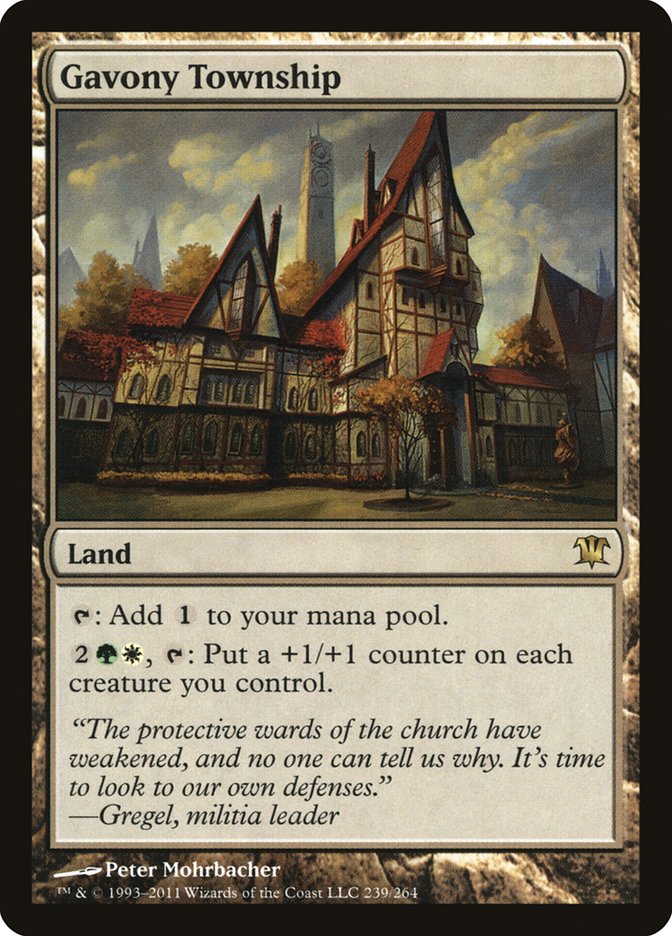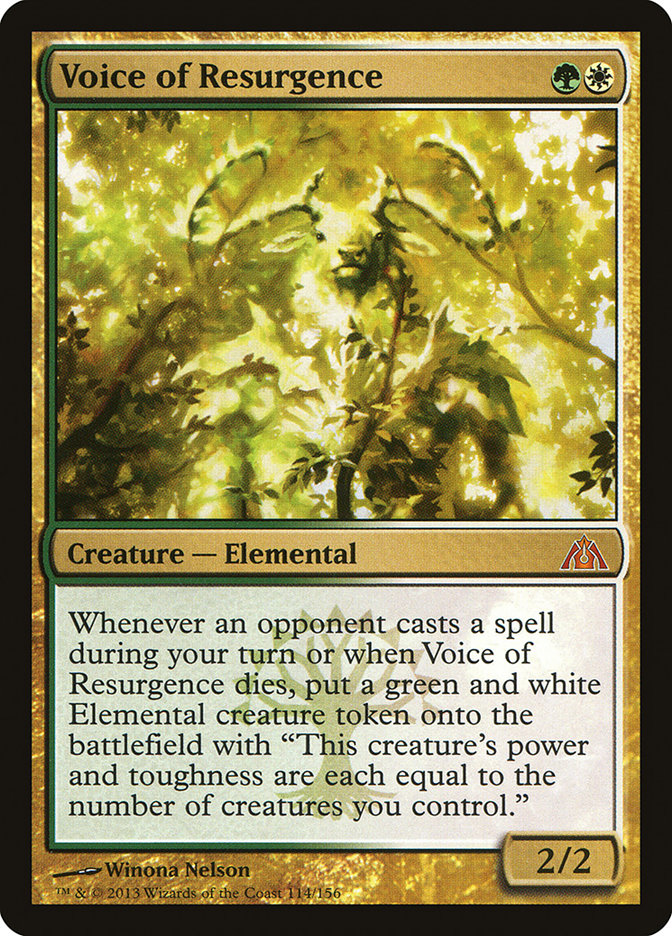As cool as it was to see Legacy in all its majesty last weekend, the format on everyone’s mind right now is Modern. Grand Prix Charlotte is going to be a
celebration of the format like no event before it, the #SCGINVI in Columbus will be a great format preview, and of course, Modern Masters 2015 is
the set everyone is drafting at the moment.
Personally, I’m trying to go the pretentious hipster route and bypass this whole Modern thing altogether. In a few years, when the next big format has
replaced it, you’ll all think I’m the coolest.

You’ve probably never heard of it.
Although it’s looking like personal logistics are going to sideline me from the main event in Charlotte (I may still pop in for some Commander and Cube
action since it’s pretty close, so get at me), and a previous commitment is keeping me from the Season Two Invitational, I did spend a while working on the
format.
As most people know, my favorite thing to do in Magic is to attack unfair things with fair things, and this Modern format has been (mostly) no exception. I
don’t know that I would’ve pulled the trigger on any of these decks-I spent a little time with a lot of them, rather than spending a ton of time with any
single one-but regardless, these are a great and diverse place to start if you’re looking to attack the format fairly and from a unique angle.
Let’s start with what I think may be the most underrated archetype in the format:
Creatures (29)
- 4 Soul Warden
- 3 Auriok Champion
- 4 Ranger of Eos
- 4 Soul's Attendant
- 4 Serra Ascendant
- 4 Ajani's Pridemate
- 4 Squadron Hawk
- 2 Archangel of Thune
Lands (23)
Spells (8)

Creatures (23)
- 4 Soul Warden
- 2 Auriok Champion
- 4 Ranger of Eos
- 4 Soul's Attendant
- 4 Serra Ascendant
- 4 Ajani's Pridemate
- 1 Archangel of Thune
Lands (23)
Spells (14)

Creatures (34)
- 4 Soul Warden
- 2 Auriok Champion
- 4 Martyr of Sands
- 2 Ranger of Eos
- 1 Wall of Reverence
- 1 Baneslayer Angel
- 1 Felidar Sovereign
- 4 Soul's Attendant
- 4 Serra Ascendant
- 4 Ajani's Pridemate
- 2 Suture Priest
- 2 Archangel of Thune
- 3 Nyx-Fleece Ram
Lands (20)
- 20 Plains
Spells (6)

Five total Soul Sisters decks placed in the top 8 of April’s Modern SCG States events, including top 3 finishes by the above pilots. That’s a pretty great
result for a deck that not many people are playing.
This archetype first appeared (as far as I know) as a Standard archetype built during Zendikar Standard. Conley Woods wielded it at US Nationals
2010 to a 14th place finish before it fell off the radar nearly entirely. The Modern port has access to way more cards, including a few that are extremely
resilient against a few of the most popular decks in the format, namely Burn and U/R Twin.
To the uninitiated, the goal is to play a White Weenie-style game while gaining boatloads of life and generating incidental power and value in the process
from cards like Ajani’s Pridemate, Serra Ascendant, and Archangel of Thune.
This deck is the epitome of potential. The shell and the strategy are inherently powerful enough to win games in droves, though I don’t think anyone has
hit on the optimal build. For instance, most of these lists play less than three Auriok Champion, which simply can’t be correct in a metagame packed to the
brim with decks that love throwing around Electrolyze and Lightning Bolt. Resolving an Auriok Champion is often the difference between winning and losing
against these red-based decks, and against Twin in particular, a Cavern of Souls or two would go a long way toward securing her spot on the battlefield. It
certainly doesn’t hurt that most of the deck’s creatures are Human.
The version that splashes black for Lingering Souls also seems to be going into a different direction, though I wonder if that card alone is worth it. You
could definitely mitigate your Spectral Procession awkwardness by adding Fetid Heath in addition to your already present Godless Shrines. If I was
interested in going this road, I’d probably just swallow my pride and add Thoughtseize or Inquisition of Kozilek. Sniping an Anger of the Gods, Supreme
Verdict, or Splinter Twin before it can wreck your life is probably worth it if you’re already on the splash plan.
And since we’re on the subject of Splinter Twin, keep in mind that the games where you get cheeky and gain as much life as you’d lose to their infinite
combo are few and far between. Only a novice Twin player would “accidentally” execute their combo without first clearing your board of any troublesome
threats. If the game goes long enough, it’s incredibly easy for them to bounce your Auriok Champion with Cryptic Command, untap, kill the rest of your team
with a host of burn spells or other removal, and then just combo off at their leisure. I’ve been amazed at how many players theorize that Soul Sisters can
win purely by assuming the Twin player isn’t familiar enough with Magic or the matchup.
One final interesting aside on this deck is that Modern Masters 2015 has turned it from a relative budget option into a deck as expensive as most
of the rest of the format. You get to dodge running shocklands in most cases, but since this deck got virtually zero reprint support from MM2015, I don’t
expect to see it gaining in any popularity based on finance alone. It is worth noting that at any time, WotC could print a new Archange of Thune-like card
that makes this deck into an instant tier 1 contender. Don’t sleep on this deck. It has a bright future, and if you’re interested, I’d work on it sooner
rather than later.
The next deck is based on a deck I played back in the day:
Creatures (22)
- 4 Cloudgoat Ranger
- 4 Kitchen Finks
- 4 Wilt-Leaf Liege
- 4 Noble Hierarch
- 3 Qasali Pridemage
- 3 Dauntless Escort
Planeswalkers (4)
Lands (24)
Spells (10)

Those that know me well know this is my favorite deck I’ve ever played in any context. The particular list in question ran over the Swiss rounds of a huge
Regional (this was back in the day of large-scale WotC Regional events that fed into Nationals), and despite a few bad plays, I never felt close to losing
a match before I was finally vanquished in top 8. Mirror match. Go figure.
This is the ported list I tested for Modern:
Creatures (25)
- 4 Kitchen Finks
- 3 Wilt-Leaf Liege
- 4 Noble Hierarch
- 3 Knight of the Reliquary
- 3 Qasali Pridemage
- 4 Loxodon Smiter
- 4 Voice of Resurgence
Planeswalkers (2)
Lands (23)
Spells (10)

I actually think I got pretty close with this one. It isn’t a deck with enough inherently powerful synergies to run away with a giant event, but it may be
the closest I’ve found to a fair 50/50 deck against most of the format. It basically acts as a fast Abzan Aggro deck, but it cuts out the early disruption
in favor of a more go-go attitude. The general idea is to put a quick hurting on the opponent with an unbelievably efficient curve, then win the game off a
giant idiot in the air from Ajani, Caller of the Pride, or sneak in extra damage via Overrun or Wilt-Leaf Liege, both of which are great flip ups from
Windbrisk Heights.
Here’s a little bit about the individual cards that make this bad boy go:
Wilt-Leaf Liege is pretty much the reason to play this deck. It pumps almost every creature in the deck twice, and it is one of the more valuable hits off
Windbrisk Heights. There will also be games where you don’t even get cute, and you just curve out and dome them. Loxodon Smiter on turn 2 is also a pretty
big game (it’ll be a 5/5 when it gets your Hierarch’s exalted trigger). And while it isn’t always amazing against Thoughtseize, these cards will
certifiably make an absolute ass out of Liliana of the Veil. In fact, if your metagame has any players on the 8-Rack deck, congratulations on your bye.
I would kill to be able to play five or six of these (who wouldn’t?). Against Twin, if you don’t have this, you’re probably dead. It can also do good work
against Infect, but make sure you practice so that you don’t get blown out by Vines of Vastwood. Against more mundane decks, it’s just the solid answer it
always is. This deck gets a lot more value out of it by virtue of not wanting the game to go long enough for the extra land to make any difference.
Speaking of Infect, this card does absolute work against Inkmoth Nexus. Being able to Fog turn after turn after turn will essentially put them into an
unwinnable position. Its most obvious application against the rest of the field is being an almost-instant Windbrisk Heights activation.
As for points that need to be improved, it’s a short and easy list:
Windbrisk Heights is extremely explosive, but it entering the battlefield tapped puts the deck a turn behind in its awkward draws. Your curve is such that
Noble Hierarch makes this mostly irrelevant, but be aware that hands like this definitely exist:
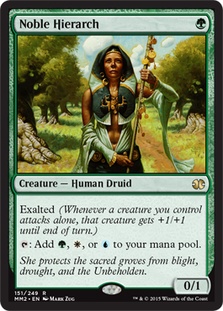

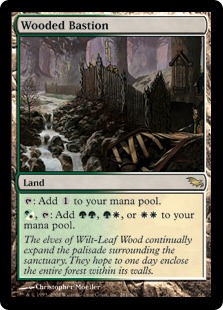



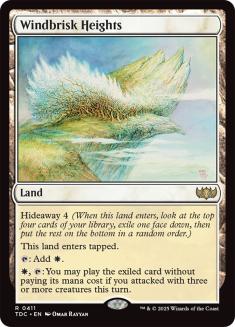
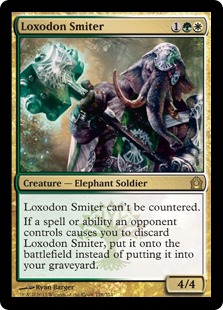

When all of your cards are ahead of the curve, they’re obviously fantastic. When they’re on a more fair curve like this, they’re going to be straight-up
worse than what your opponent is doing. I don’t know that this deck has it in it to fix these issues aside from just eating it and mulliganing once in a
while.
The other suspects on the cut list are these:
Gavony Township is a joke. Seriously, build this deck, but do not play this card. The games never go long enough for this to actually matter, and while
tutoring it up with a Knight of the Reliquary seems sweet for inevitability, it’s rarely better to do that rather than just hit them in the mouth. Sejiri
Steppe is the main candidate to replace it currently.
As for Voice of Resurgence, it’s one of those cards that just doesn’t play team ball. The curve often just skips over the little fella, and Modern just
isn’t in a place where it’s all that hatey. At the very least, I’d recommend taking one out for the fourth Wilt-Leaf Liege.
Next up is a deck that has been putting together solid results just underneath the mainstream tournament success radar:
Creatures (10)
Planeswalkers (1)
Lands (22)
Spells (27)

Creatures (11)
Planeswalkers (1)
Lands (22)
Spells (26)

This deck reminds me a lot of a deck built by Dave Shiels and played by a handful of friends of mine at a Washington DC Standard Open a few years ago
(Forrest Mead and Glenn Jones both played it to reasonable results at the event, I believe). This deck is fantastic at grinding incremental value and
chip-shotting your opponent while you set up constant creature advantage and blank most forms of one-for-one spot removal. The strategy got a number of
upgrades in recent sets, most notably cards like Tasigur, the Golden Fang and Monastery Mentor.
If you can’t decide between tokens, graveyard delve shenanigans, and control, this is a sweet one. I can’t imagine this one has very many decks to be
afraid of, and although I sorely miss the color green here, it seems like a great safe choice for a large-scale event.
So yeah, I probably can’t play in the big show, but which of these would I choose if I was going to play in the event?
Well, none. In fact, I wouldn’t play a fair deck at all.
You see, there’s nothing wrong with catering your deck choice around your relationship with a format. Modern, more than any other format, is my occasional
“why the hell not” format. If I played the format every week, I’d probably build a Hatebears or other G/W brew to battle with, something that gave me lots
of dynamic games and a good percentage against everyone.
Well, that’s not how Modern and I work. I play Modern on special occasions. And accordingly, it’s a format where the deck I play demands to be something
completely different, something goofy, something that makes my day by ruining other people’s days. The Legacy Belcher kids know exactly what I’m talking
about.
Creatures (26)
- 1 Kiki-Jiki, Mirror Breaker
- 1 Twisted Abomination
- 2 Simian Spirit Guide
- 4 Street Wraith
- 2 Pestermite
- 1 Jungle Weaver
- 2 Architects of Will
- 1 Pale Recluse
- 4 Monstrous Carabid
- 4 Deadshot Minotaur
- 4 Deceiver Exarch
Lands (18)
Spells (16)
Sideboard

There are few feelings greater than sitting down for round 1 against a perfectly reasonable human opponent, shaking hands, then beginning the game by
confirming their worst nightmares. That’s right, buddy. You traveled seven hours, playtested against the top tier decks for four months, booked your hotel
in advance, and then you got paired against Twinning End round 1.
Man I love Magic.

